How did the generations of women in ancient Egypt
During the excavations in southern Egypt, archaeologists found the skeleton of a pregnant woman. Disposal of approximately 3,700 years, and is believed to scientists finding may shed light on the history of the birth and survival of the ancient world. The fact that the mother and her child, presumably died during childbirth. And in Ancient Egypt is a very typical situation.
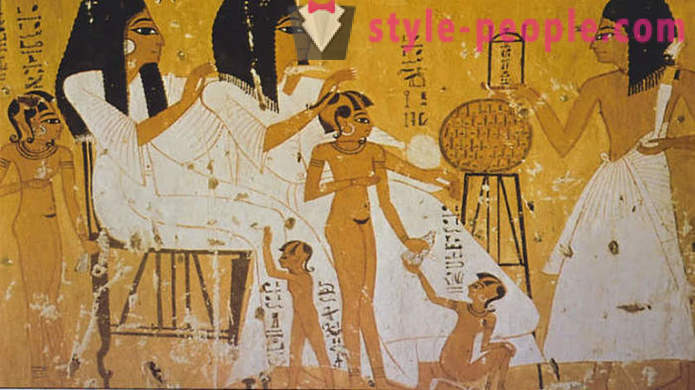
not survive childbirth?
Just recently, the Egyptian Ministry of Antiquities officially informed that during the excavations conducted by the Italian-American team of archaeologists on the territory of graves near Aswan, discovered the skeleton of a pregnant woman with a child stuck in the pelvis in a head down position. Scientists came to the conclusion that the death of Egyptian women are likely to be caused by childbirth.
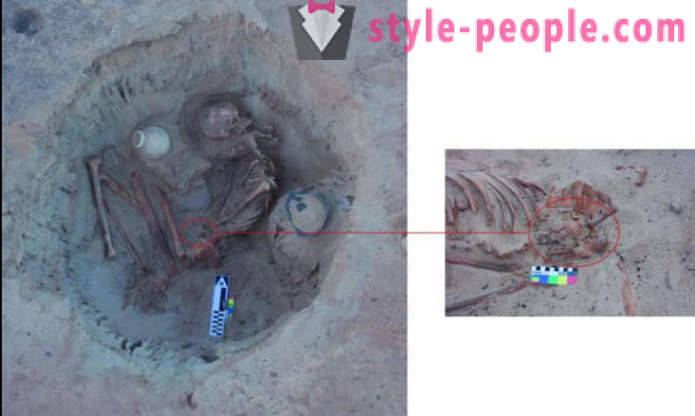
- Detection of a pregnant woman who may have died in childbirth - a rare event in archeology - explains Bioarchaeology, professor at the University of Central Florida Sandra Wheeler. - The bones of the mother and baby will help us to get more information about maternal mortality in ancient Egypt.
In this state, motherhood raised the social status of women, because the culture of Ancient Egypt venerated children and worshiped fertility. However, as scientists assume, for some reasons (lack of hygiene, poor knowledge in the field of obstetrics and so on. D.) Childbirth often end with the death of the woman, and found the remains of only confirm this hypothesis.
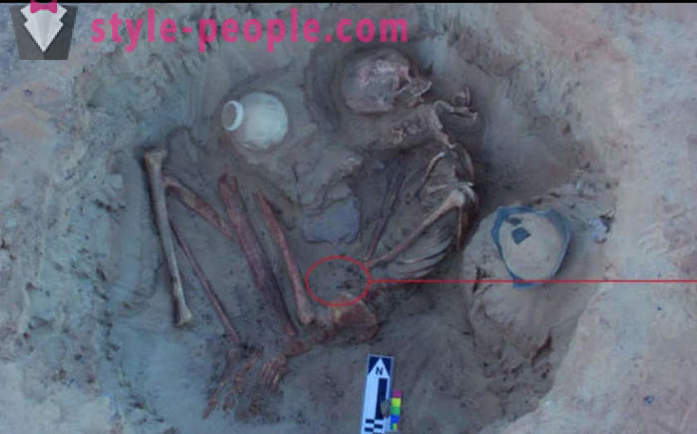
The child stuck in the area of maternal pelvis. / Photo: nationalgeographic.com, Courtesy of the Ministry of Antiquities of Egypt.
Researcher with caution notices that give a reason with absolute precision is impossible to death without the presence of soft tissue. However, indirect evidence also support the fact that women were heavily birth. skeleton pelvis shifted somewhat, which, according to Wheeler, can talk about that in the early years, at an important stage of the women's development, Egyptian suffered injury or severely malnourished. And it could play a fatal role in the labor process. Archaeologists also called the approximate age of the woman: at the time of pregnancy, she was about 25 years old.
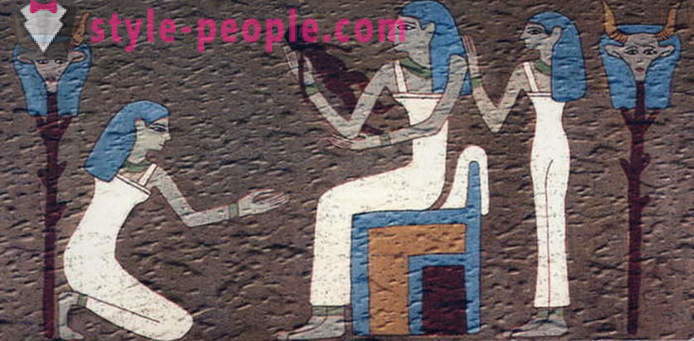
The fact that the birth in ancient Egypt were deadly process, evidenced by excavations conducted earlier by archaeologists in Dakhla oasis, located in the Western Desert of Egypt. Then scientists discovered about 200 premature fruit - it's probably had miscarriages. All of them have been buried as a few thousand years ago, at approximately the same time period. It is interesting that each of them was buried separately. Apparently, the ancient Egyptians believed the dead premature babies and fully human mourned him as well as for the victims of small children.
How a pregnant lived in ancient Egypt
Since pregnancy and childbirth from the ancient Egyptians has been associated many complex beliefs and spiritual practices. Woman, reproducing offspring, play an important role. It was believed that if a woman is not able to conceive, the husband has a right to divorce her, because she could not give him an heir.
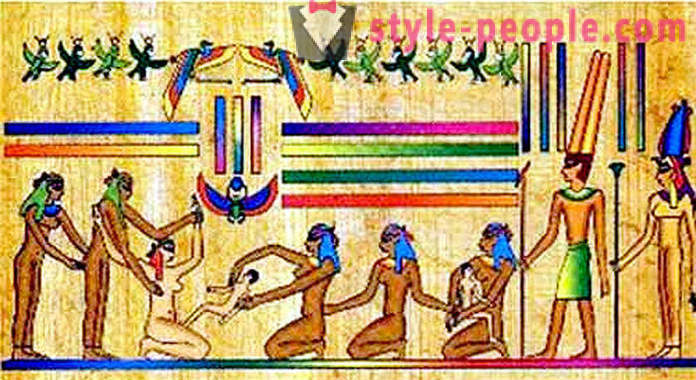
However, in ancient Egypt existed and contraception. Moreover, it has been officially authorized. Archaeologists have discovered many ancient texts with recipes supposedly helps women avoid pregnancy. Some of these ingredients are now difficult to identify, but the formulas are able to decipher, basically look a bit doubtful. For example, the "miracle" was considered as a means of a mixture of celery and beer.
At the same time there were also more reasonable recommendations of doctors, and this indicates that some ancient Aesculapius had good basic knowledge in the field of medicine. For example, they used the spermicide fermented acacia. Obtained from it lactic acid kills sperm, and the Egyptians knew about it well. As well as evidence on the record of ancient papyri, doctors realized he conceived the principle and the development of the fetus in a woman's body (for infants, for example, wrote, "He came out of the egg"), as well as know how to calculate the due date.
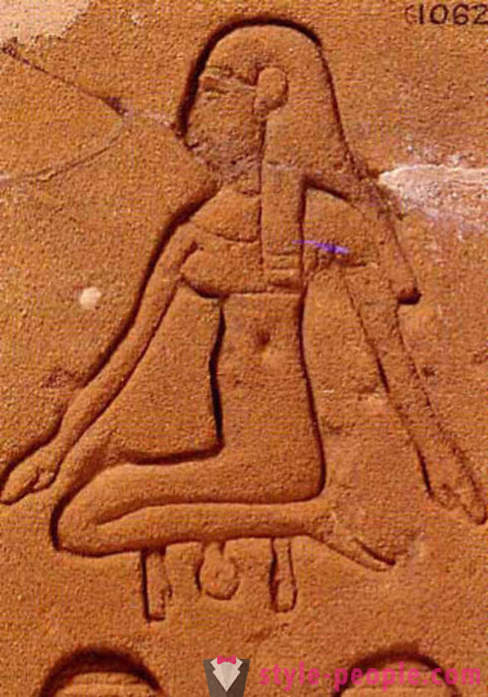
to pregnant women in ancient Egypt were treated with great respect, because she, according to local mythology, the patron goddess of tenenet. It was believed that it protects babies and their mothers. Ancient artists depicted the goddess either in human form or as a lion or a snake. Also, pregnant prayed goddess taweret which, according to their beliefs, assisted delivery and typically depicted in the form of vertically standing female hippopotamus with impressive size female breast.
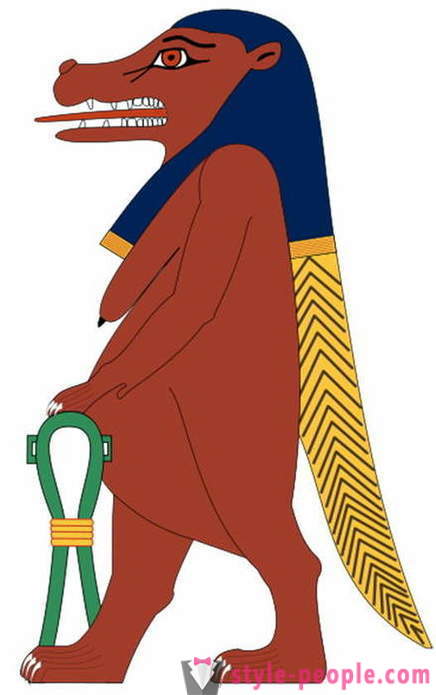
And throughout pregnancy expectant mother wearing on their necklaces and bracelets special protective amulets.
Up until the birth of the Egyptian body rubbed with "medicinal" oils, each of which is stored in a special bottle shaped like a pregnant woman.
If spouses want to know the sex of the unborn child, they resorted to a very common way that later borrowed from the Egyptians, Greeks and Byzantines, and even Europeans. A piece of cloth moistened in the urine of a pregnant woman and put this cloth seeds of barley and wheat. If the first sprouted barley grain, it was thought that a boy (barley in Egypt has been synonymous with the word "father") in the family, if the wheat - wait for the girl.
The birth of Egyptian
Before the birth of the Ancient Egyptian woman shaved hair all over his body - even on the head. Assistant, which today would be called the midwives, supported by the expectant mother during labor and birth process. Some of them do have certain skills in the field of obstetrics, as at Sais there a special institution, which prepared these midwives.
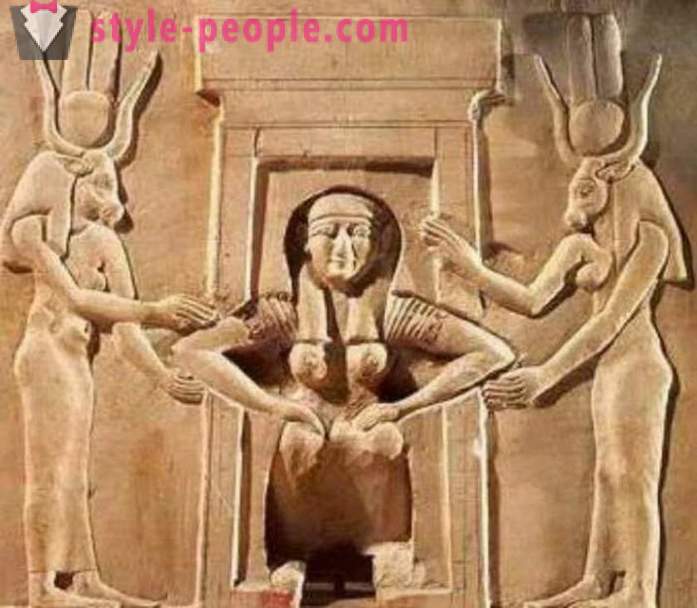
The birth of the child took place in a special room that resembles a temple. The woman was on the mat, the corners of which her aides put four bricks depicting scenes of childbirth and the "core" of the deities. These bricks were considered the embodiment of the four goddesses - Nut, Tefnut, Aset and Nebet. Moreover, giving birth to the future mother is not lying, and squatting or kneeling.
Of particular relevance was the ancient Egyptians to the placenta. It was believed that the last healthy demonstrates that unborn child in your life will have good luck, and the disease will bypass his party. After delivery, the placenta with special honors buried in the ground.
Given the high risks that have been associated labor in ancient times, it is not surprising that the attitude towards this process in ancient Egypt was accompanied by rituals, and was shrouded in an aura of mystery.













































